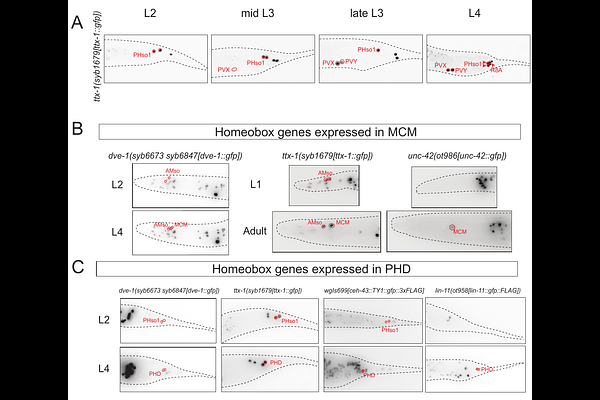Pervasive homeobox gene function in the male-specific nervous system of Caenorhabditis elegans

Pervasive homeobox gene function in the male-specific nervous system of Caenorhabditis elegans
Fernandez, R. W.; Digirolamo, A. J.; Valperga, G.; Aguilar, G. R.; Molina-Garcia, L.; Kersh, R. M.; Wang, C.; Pe, K.; Ramadan, Y. H.; Loer, C.; Barrios, A.; Hobert, O.
AbstractWe explore here how neuronal cell type diversity is genetically delineated in the context of the large, but poorly studied male-specific nervous system of the nematode Caenorhabditis elegans. Mostly during postembryonic development, the C. elegans male adds 93 male-specific neurons, falling into 25 cardinal classes, to the predominantly embryonically generated, sex-shared nervous system, comprised of 294 neurons (116 cardinal classes). Using engineered reporter alleles, we investigate here the expression pattern of 40 phylogenetically conserved homeodomain proteins within the male-specific nervous system of C. elegans, demonstrating that in aggregate, the expression of these homeodomain proteins covers each individual male-specific neuron. We show that the male-specific nervous system can be subdivided along the anterior/posterior axis in HOX cluster expression domains. The extent of our expression analysis predicts that each individual neuron class is likely defined by unique combinations of homeodomain proteins. Using a collection of newly available molecular markers, we undertake a mutant analysis of five of these genes (unc-30, unc-42, lim-6, lin-11, ttx-1) and identified defects in cell fate specification and/or male copulatory defects in each of these mutant strains. Our analysis expands our understanding of the importance of homeobox genes in nervous system development and function.